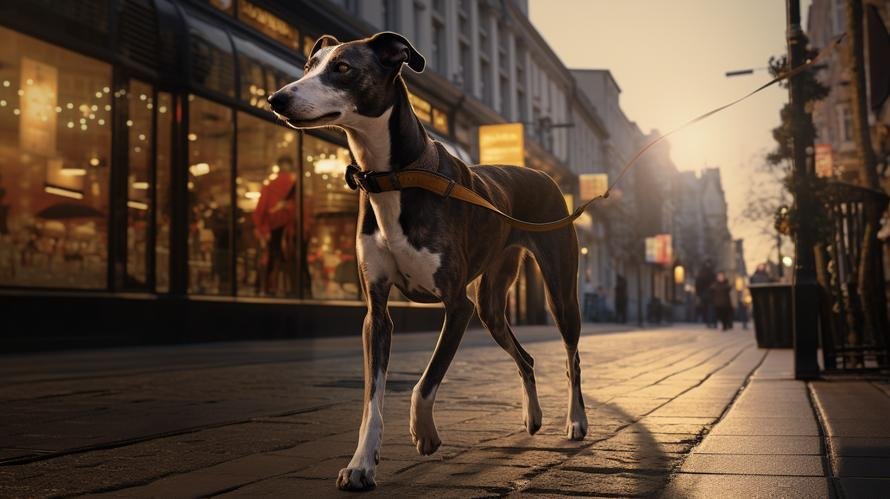When you think of a Greyhound, what’s the first image that pops up in your head? Probably a lean, graceful hound flying down a racetrack or perhaps nestled comfortably on a plush couch. Well, you’re not wrong. Greyhounds are indeed famous for their sprinting abilities. But did you know that they have been described as “the world’s fastest couch potatoes?” This endearing moniker brings us to the heart of our subject: the temperament of the Greyhound.
Greyhounds are an ancient breed, with a history that goes back some 4000 years to the early civilizations of the Middle East. Their distinctive slim physique, helped them to go from being royal hunting dogs to high-flying racetrack stars. But in reality, that’s far from the whole picture. Their high-octane image has led many to believe that Greyhounds can be a somewhat aggressive breed. However, the truth is quite the contrary.
Often described paradoxically as both muscular and lean, Greyhounds owe their impressive speed – up to 40-45 miles per hour – to their unusually large heart and high red blood cell count. But don’t let their athletic ability fool you; Greyhounds are typically gentle, lovable creatures that get along famously with adults, children, and even other dogs.
So, where did the misperception about Greyhound aggression come from? It’s hard to pinpoint one reason for this. It may be due to their fiery performance on the racecourse or even the erroneous belief that because they are hunting dogs, Greyhounds must be aggressive.
However, the truth is that Greyhounds have a prey drive, not an aggression drive. Their traditional job was to chase game, not to fight it. This response, known as prey drive, is a natural instinct for many dogs, and it is especially strong in hound breeds like the Greyhound. However, a high prey drive does not equate to aggression towards humans or other dogs.
Greyhounds are generally known to be docile and friendly. They’re seldom found to be the instigators in canine disagreements. Occasionally, their high prey drive might cause them to chase smaller dogs, particularly ones that run away from them, but that’s just instinct, not aggression. With proper socialization and training, this behavior can be managed effectively.
Another common misconception about the breed is that Greyhounds require lots of exercise, which, if not provided, can lead to aggressive behavior. However, nothing could be further from the truth. Greyhounds are built for speed, not endurance, and actually prefer lounging around the house to running in a park. In fact, they are often referred to as “45-mph couch potatoes.”
Every dog is different, and there may certainly be individual Greyhounds that display aggressive behavior, but it’s crucial to emphasize that this isn’t typical of the breed. Aggression in dogs is usually linked to factors such as poor socialization, fear, or previous traumatic experiences, not breed disposition.
So, how can you ensure that your Greyhound grows up to be a well-rounded and happy dog?
Training a Greyhound should start at an early age, ideally when they’re puppies. Due to their sensitive nature, it’s recommended to use positive reinforcement methods, such as treats and praise, instead of harsh scolding or punishment. It’s also important to expose them to a variety of environments, people, and other animals to help properly socialize them.
Remember that Greyhounds are highly sensitive to the cold due to their thin skin and lack of body fat. Therefore, ensure your dog is kept warm during the colder months and that you have a soft, comfortable place for them to sleep.
In conclusion, labeling Greyhounds as an aggressive breed is a massive misunderstanding. These dogs are generally docile, friendly, and incredibly affectionate all around. Not only do they make excellent companions, but they are also wonderful additions to many families, thanks to their laid-back attitude and gentle temperament.
The next time you see a Greyhound dashing like the wind, remember: Once they’re over the finish line, they’re probably daydreaming about curling up on a cozy couch, preferably with their favorite human by their side. So rather than asking “Is a Greyhound aggressive?”, perhaps the better question is “do I have enough room on my couch for a Greyhound?” The answer, we suspect, might just be yes.



